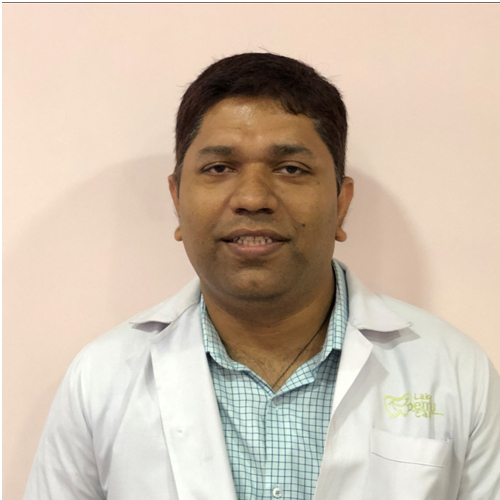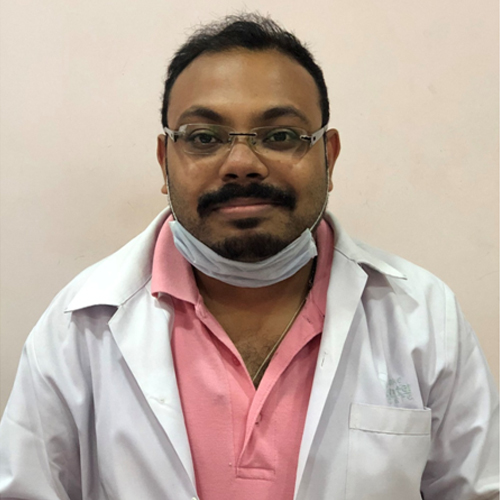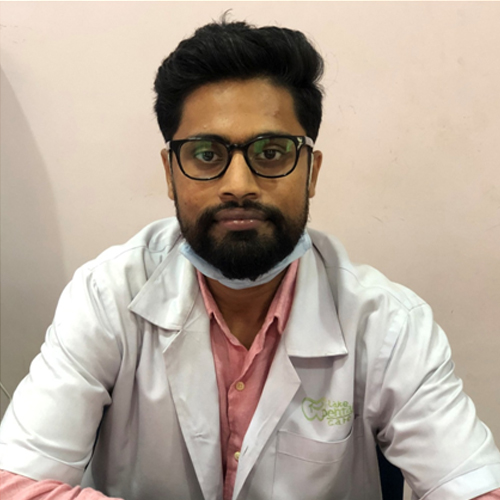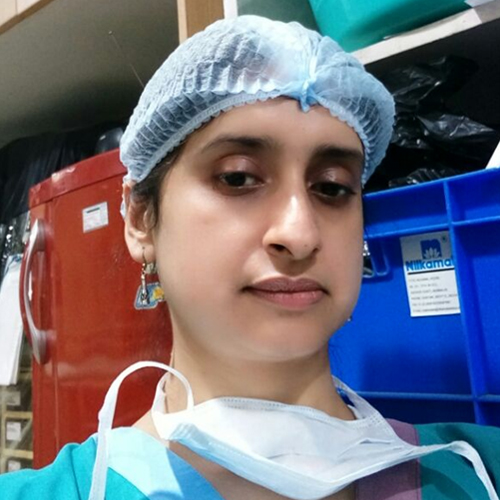FOR APPOINTMENT CALL
9874731041
WORKING HOURS
Center 2 : Monday to Saturday 5:30 p.m. to 8:30 p.m.
Center 3 : Monday to Saturday 9:00 a.m. to 7:00 p.m.
Best Features of CLINIC
Welcome to Lake Dental Care “Dedicated to excellence; Dedicated to your Smile”
Center 1
Center 2
It is located close to Rabindra Sarovar Metro & Mudiali Bus stop. Even this area is well communicated with city buses and the Kolkata Metro.
Center 3
Phone : +91 33 40443460
Our Expert Doctors
Team of Dental Surgeons
Our Specialties

Dental Implants:
- It is a surgical component that interfaces with the jaw bone or skull to support a dental prosthesis viz. a crown, bridge, denture, facial prosthesis etc.
Most implants connect with another component in order to function, i.e. an abutment- it provides the connection between the dental prosthesis and the implant. - Dental Implants used now-a-days are made of titanium-these implants fuse with bone through a biologic process called “osseo-integration”.
- For successful Dental Implant one needs to have a good oral hygiene, healthy gingival, adequate bone to support the implant.
- In a nut shell , a dental implant replaces the root of a tooth with metal (Titanium) screw like posts-which allows to fix an artificial tooth permanently (in the missing or decayed tooth area)-which looks and function much like a natural tooth.

Orthodontics and Dento-Facial Orthopedics
- It includes the treatment of malocclusion (Improper bites), which may be aresult of tooth irregularity, disproportionate jaw relationship or both.
- Orthodontia focuses on proper alignment of teeth by dental displacement or can deal with modification of facial growth (Dento-facial Orthopedics); which can achieve maximum aesthetics and functional efficiency.
- Crooked and crowded teeth are hard to clean and maintain and hence are proven sources for accumulation of harmful bacteria- which may lead to tooth decay, gum disease and tooth loss.
- a) Orthodontic screening of child should be done before the age of 7.
- b) Ideal age to commence orthodontic treatment is 12-14 years, although can be started at any age.
- c) Human bone responds best to tooth movement before the age of 18 years. Therefore orthodontic treatment is more beneficial to a child than an adult.

Why is the pulp removed?
- Damaged or injured pulp breaks down and bacteria begins to multiply in the pulp chamber-The bacteria along with other decayed debris causes an infection or abscessed tooth ( pus filled pocket at the root end of tooth), which leads to pain and swelling.In severe cases swelling may proceed to areas of face, neck or head.
- There may be bone loss around the tip of the root.
- Sinus opening can occur through the side of tooth, with drainage into gums or through the cheek with drainage into skin.
Endodontia
- Derived from the Greek- endo means inside, odons means tooth.
- It deals with the study and treatment of dental pulp.
- Endodontists perform a variety of procedures including endodontic therapy (commonly known as root canal therapy), endodontic re-treatment, treating cracked tooth, dental trauma etc.
- Root Canal (RCT) is the most common procedure performed to save a tooth. When the dental pulp (containing nerves, arterioles, venules and lymphatic tissue) becomes diseased or injured.
Why is the pulp removed?
- Severe toothache
- Prolonged Sensitivity / pain to hot or cold
- Discoloration (Darkening) of tooth
- Swelling and tenderness on gums
- Persistent or recurring pimple on gums.

Oral & Maxillofacial Surgery
Deals with surgical management of diseases that affect the face and mouth including the jaw bones.
Oral & Maxillofacial surgeons –
- a) Orthodontic screening of child should be done before the age of 7.
- b) Surgically reconstruct inadequate bone structure in jaw area.
- c) Expertly treat head and neck trauma and injuries to face, jaws, mouth and teeth.
- d) Diagnose and treat facial pain.
- e) Diagnose and treat oral cancer and other diseases in the maxillofacial region.
- f) Perform corrective Jaw surgery to improve the function and appearance of patients with conditions like cleft lip and cleft palate and other congenital defects.
- g) Diagnose and surgically treat obstructive sleep apnoea.
- h) Perform facial cosmetic procedures to enhance facial appearance and function viz. correction of deformed jaw bones, nose and cheek bones e.g. Orthognathic surgery.

Pediatric Dentistry
- Deals with children from birth to adolescence. Pediatric dentists promote dental health of children as well as serve as educational resources to parents.
- Pediatric dentists have an in depth knowledge of child psychology, which helps to manage and provide efficient dental care to children. It is their responsibility to ensure a pleasant experience during a childs visit to a dentist.
- Pediatric dentists are trained to provide:
- a) Rstoration (fillings) of primary teeth
- b) Pulpotomy and pulpectomy (pediatric root canal)
- c) Minor orthodontic correction
- d) Preventive care for cleft lip and cleft palate
- e) Oral hygiene instruction to children-for prevention of dental caries.

Prosthodontics
Also known as dental prosthesis or prosthetic dentistry.
It deals with diagnosis, treatment planning, rehabilitation and maintenance of oral function , comfort , appearance of patients with clinical conditions associated with missing or deficient teeth and/or oral and maxillofacial tissues using bio-compatible substitutes viz. dentures, dental implants, oral and facial substitutes.
Dentures:
A denture is a removable replacement for missing teeth and surrounding tissues Two types of dentures are:
i) Complete denture
ii) Partial denture
• Complete denture- used when all teeth in maxillary (upper jaw) and mandible (lower jaw) are missing
• Partial Dentures (Removable & Fixed) – Partial loss of teeth may be treated by fixed restorations (bridges) which are cemented to remaining teeth or by fabrication of partial dentures that are readily removable.
The decision as to whether fixed or removable partial denture is necessary depends on the following factors:-
• Bone support of remaining teeth
• Condition of remaining teeth
• The way of functioning of teeth
• Overall health of the patient.
An alternative and modern way of approach other than dentures is the concept of Dental Implants.

Oral Hygiene
Oral hygiene is the practice of keeping the mouth and teeth clean- to prevent dental problems viz. dental caries, gingivitis and halitosis (bad breath)
Good oral hygiene
• Can be achieved when tooth are clean and free of debris
• Gingiva (gums) should be coral pink and should not bleed during brushing and flossing.
How to practice good oral hygiene
• Daily preventive care – brushing and flossing helps to stop problems before they develop and is much less painful and less worrying than treating conditions that have been allowed to progress.
The decision as to whether fixed or removable partial denture is necessary depends on the following factors:-
– Brushing should be done thoroughly twice
– Having a balanced diet and avoiding in between snacks or meals
– Using dental products (toothpastes) that contain fluoride
• In between regular visits to the dentist decrease the risk of developing tooth decay, gum disease and other dental problems.
• Massage gums with bristles of toothbrush for good oral health
Inter-dental brush
Also known as inter-proximal brush or proxa brush can be used to clean the area in between two teeth (inter-dental area) where food tends to accumulate.
• It consists of a small brush, typically disposable, either supplied with a reusable angled plastic handle or an integral handle.
Tongue cleaning
Cleaning of tongue removes the white /yellow bad breath coating of bacteria, decaying food particles, fungi (Candida) and dead cells from dorsum of tongue
Oral irrigators can be used to disrupt plaque and bacteria

Smile Designing and Cosmetic Dentistry
• Smile Designing requires a organized and systematic approach to evaluate, diagnose and resolve esthetic problems predictably.
It is of prime importance that the final result is not dependant only on looks alone. Our ultimate goal is to achieve a pleasing smile by creating an arrangement of various esthetic elements.
• Goal of smile make-over is to develop a peaceful and stable masticatory system, where teeth, tissues, muscles skeletal structures and joints all function in harmony. Components of an esthetic smile
– Harmonizing an esthetic smile requires a perfect integration of facial composition and dental composition.
– Facial composition includes hard and soft tissues of face.
– Dental components include
1. Tooth Components
a. Dental midline
b. Incisal Length
c. Tooth Dimension
d. Zenith point
e. Axial Inclination
f. Inter-dental Contact area
g. Incisal embrasure
h. Sex, personality and age
i. Symmetry and Balance
2. Soft tissue components
a. Gingival Healthe
b. Gingival levels and harmony
c. Inter-dental Embrassure
d. Smile line
Cosmetic Dentistry
Performed to improve facial appeal, smile and beauty of a person
Cosmetic Dentist focuses on altering existing dental arrangement and features of the patient to enhance their esthetic appeal. This acan be accomplished by
• Cosmetic implants
• Teeth whitening
• Porcelain Veneers
Cosmetic dentistry not only appeals visually pleasing to the eye but also has positive effects in general well-being of the patient
Purpose of cosmetic dentistry is to correct mal-alignment of teeth, improve appearance of the jaw region and arrangement of jaw structure. Also cosmetic dentistry deals with discolored, crooked, gapped tooth, uneven and gummy smiles etc.
What Our Patients Says
FAQ
Poor Oral Hygiene, viz. inadequate brushing, flossing and rinsing after meals-this results in accumulating of thin film of food on tooth surface-to which bacteria adhere-this causes gum inflammation and subsequent bleeding.
Injury to gums- by sharp food items, by hard brushing, by using tooth-pick etc.
• ANUG – Acute Necrotizing Ulcerative Gingivitis- A rapidly spreading infection that damages the blood vessels of the gums.
• Deficiency of Vitamin C
• Systemic Blood disorders viz.
a. Allergic reaction
b. Increase in platelets
c. Failure in blood clotting
d. Leukemia e. Drugs like asprin and anti-coagulants
Treatment
Long standing infections are treated by removal of the source bacteria, by a process called scaling, followed by proper oral hygiene regime. Systemic diseases associated with gum bleeding need to be treated with proper medical intervention, viz. correction of bleeding disorders.
Teeth look longer than usual
– Occurs due to receding gums, may be associated with sensitivity
– Occurs commonly during old age.
– Betel nuts tobacco chewers are more prone to oral cancer, although genetics, diet, environment and immune system also play a part.
– Several white and red lesions of the mouth caused by betel nut and tobacco chewing- will definitely improve if lesions are identified and habit is stopped in time.
– Pain is usually a late sign of oral cancer, but pain in the head and neck region should not be ignored.
– There are side effects to all form of Oral Cancer treatment.









